Training 90-Degree Corners in Sport Tracking
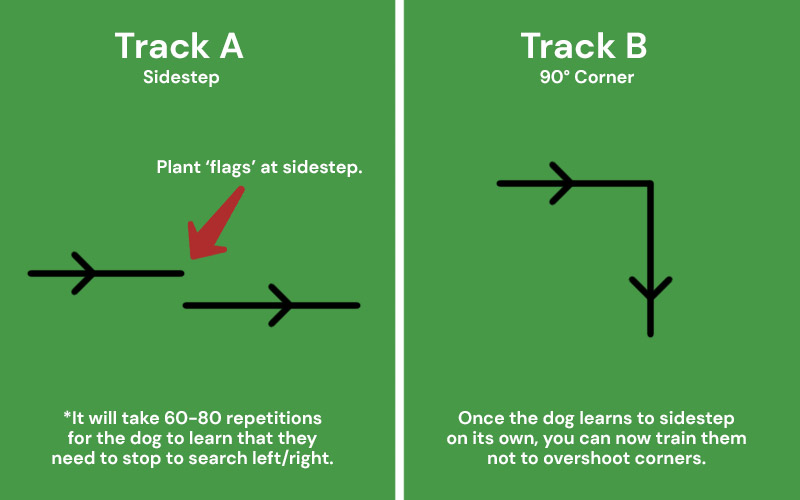
I am often asked how to train sport dogs to not overshoot corners. The fact is that teaching a dog a perfect 90-degree turn without overshooting is a simple obedience exercise and every dog can learn it. In fact, it is not a difficult thing to train.
Before this work is started though, the dog must first understand the STAND STAY command. (I will not go into the training for the Stand Stay in this article).
To train this exercise, the handler does not use any articles or food on the track. By this point in the training, the dog should only have food at the end of the track. When the dog understands that the food is always at the end of the track, there will be a strong drive to track. This is especially true if a dog has learned that if it does not track, it will not eat for the day. Every dog will track for food, especially if it had decided not to track for a couple of days and this had resulted in NO FOOD for 2 days.

When the training for corners is to begin, the tracks are laid as you see in TRACK A on the diagram. In Track A, the track layer walks a straight track and does a sidestep at one spot (or more than one spot) on a straight leg track. After doing the sidestep, he continues in the same direction he was originally going. The step to the side must be short enough so the dog can stand at the point of the sidestep and smell the new track to the right or the left. (In other words, you don't jump 3 feet to the left or the right.) The food is always at the end of the track.
The handler MUST KNOW EXACTLY where every one of these side steps is. They can be marked by very small flags. You can use surveyor flags that have had the plastic flag cut off of the metal wire. The dogs cannot see these flags. It's true that if handlers use big flags, the dog will learn to look for flags and track from flag to flag. But, if there is only very, very thin wires with a little color on the end the, dog will not see them.
During this training, when the dog tracks, the handler has the dog on a very short leash. It should be no longer than 6 feet. Do not use a long tracking line. The dog must have been conditioned to track on a short line before this work starts so it is not stressed by the handler coming close to them while tracking.
As the dog moves down the track and comes to the sidestep, the handler stops and only allows the dog to go one body length past the flag. The handler gives the dog a "STAND STAY" command. The handler stops so that no matter what, the dog CANNOT take one step past the "one body length." When the dog stops, the handler gives a soft encouraging SEARCH command.
If the dog gets a little unsettled at this point, the handler can step to his dog and put his hand on the side or underbelly to bring it into a standing position facing straight down the track.
Initially, the handler may have to give the STAY command as he steps forward to stabilize the dog's body into a STAND STAY position. When the dog is stabilized, the handler will then give the SEARCH command. The dog is allowed to check left or right for the track. It is not allowed to circle or move forward. If it's necessary to, repeat the STAY SEARCH command several times to make the dog understand that it must immediately stop and search left and right to find where the track has gone. The dog must learn that at the end of the track scent, it must stop and search left or right.
If the dog is not 100% sure of the STAND STAY, you will have a problem here. If this is the case, then the training must be backed up and the handler must work on the STAND STAY command. It may be necessary to use some force in the tone of the voice to reinforce the STAY. That handler should not use leash corrections, but rather, move to the dog and physically hold him in a stay position until he is ready to give the SEARCH command.
When the dog locates the sidestep, it is allowed to move forward (with praise) and continue on with the track. There can be more than one of these sidesteps on a single track. It takes 60 to 80 of the sidesteps for the dog to learn this exercise. During the first 30 training sessions, the tracks should be on easy grass tracks.
Remember, the dog can only be trained to learn one thing at a time. Do not make the mistake of using articles or difficult tracks while we are trying to teach the dog that it must stop at the end of the scent and search.
When the dog stops at the "sidestep" on its own, they are ready to then go on to normal corners as you see on TRACK B.






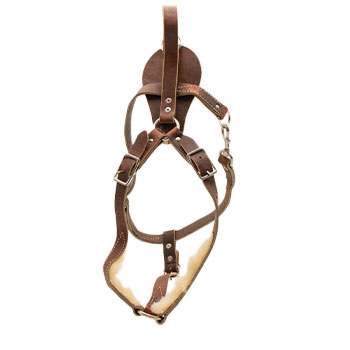

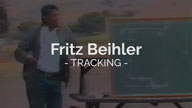
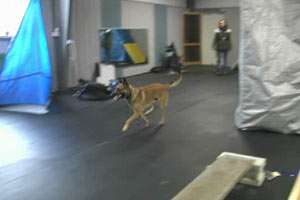
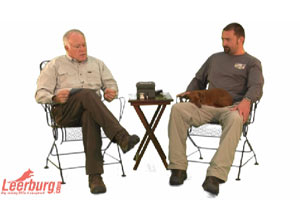
Ask Cindy.